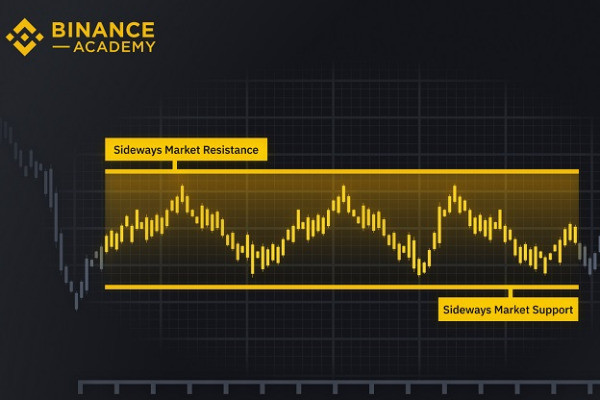Price action strategy has long been regarded as one of the key principles to succeed in various markets. What about cryptocurrency then? What do beginners need to know about Bitcoin price action?
The nature of price action is not only referring to the previous price movements but also analyzing market behaviors. In fact, it has been used by traders and investors for analytical purposes in any existing market such as forex, stocks, commodities, and so on. Likewise, many cryptocurrency traders utilize price action to analyze the market.

If you're looking to trade Bitcoin, instead of looking at which price action strategy would generate higher profit, you only need to learn the 3 main principles of Bitcoin price action analysis.
1. Mind the Psychological Levels
A lot of market outlooks focus on the psychological levels, making it an attractive area for traders to take action. Take this as an example. In less than three months since ETH achieved its initial highest around $1,380 in late 2017, its value has risen by nearly 54% to a total of $2,140. People would round that notion with a takeaway as simple as: "It only took 80 days to go from $1,000 to $2,000."
Also, there have been some notes regarding ETH's previous bearish trend that are similar to: "After falling below its all-time high in 2017, ETH struggled for nearly three years to break through the $1,000 barrier."
The number 1,000, 2,000, is much more comprehensible than 1,387 or 2,140. This belief pushes the idea that significant movements will happen should the price break or fail to break the round numbers; hence the name "psychological levels".
When the price starts to approach said levels, market participants tend to "get ready" to take action. As a beginner, you should be aware of this condition. But instead of deciding what to do before any action takes place, it's better to wait around until the price either breaks or rebounds from a psychological level.
2. Understand the Patterns
Cryptocurrency prices, like any other market, move in cycles. A period of rapid growth is almost always followed by a period of rapid decline. It's similar to a mechanical spring in that it can only be pressed to a certain point before springing back when the pressure is released. Though in the end, the spring will return to an equilibrium state once released.
Some believe Bitcoin's drop to $3,100 in 2019 represents the market bottom due to its slow and prolonged reversal, as BTC has never fallen below $3,100 since. When these patterns emerge, traders can usually benefit from anticipating similar things to happen again when the price bounces back from the area.
The key in price action is to be attentive enough to notice this kind of pattern. Remember that when the price reaches a high point, the buying momentum will fade away and sellers will reap the profits and vice versa. Therefore, understanding support and resistance levels, supply and demand zones, as well as oversold and overbought areas are highly crucial.
Furthermore, chart patterns in Bitcoin price action may also be related to technical terms in recognizing specific formations such as the flag patterns, triangle patterns, wedges, etc. Said patterns generally represent a group of price bars that precede a significant turn like trend reversals or continuations.
3. Analyze the Trend
Price action can also be used to identify trends. Higher lows usually signify an upward trend while lower highs refer to a downward trend. Knowing where the price goes would help you decide whether to follow or go against the trend. Both actions have their pros and cons, and it is imperative to know no one is better than the other.
It's actually a matter of preference as trend followers typically like to go with the flow and take opportunities from when the price forms a pullback. Meanwhile, counter-trend traders are most likely swing traders who prefer to ride a new trend so early that they begin to anticipate it even before the reversal.
See Also:
What You Need to Know
Bitcoin price action trading is mostly known for its short or medium-term traders instead of the long-term traders who want to invest in their assets. Therefore, managing your trade carefully is a must. Every trader, no matter their motives, always wants a huge amount of profits even though the risk can also be bigger. In order to not lose in the game, you need to make several accounts to allocate your assets wisely and do a lot of research. Knowing there are lots of traders with different backgrounds, you certainly do not want to belong to those traders who lose their assets when one market crashes. Apart from better account management and asset allocation, there are 3 facts that you should be aware of:
1. Limited Data
Unlike forex or stocks, cryptocurrency does not have many historical data due to its recent existence. If you invest in forex or stocks, you might notice that these two have decades' worth of fundamental and technical data that will help traders to test strategies or derive historical information that deals with repeated market behavior. But with cryptocurrency that only began in 2009, the market is practically an uncharted territory.
Historical data, either fundamental and or technical, are significant to make decisions. Thus, the statistical modeling and strategy using cryptocurrencies are limited and even if you can gather small data samples, the results might be unreliable. So, if you are keen to try trading with cryptocurrency, make sure to note the abovementioned key points to hone your skills in interpreting Bitcoin price action.
2. Full of Uncertainty
As already mentioned before, with a small amount of data, it can be difficult for traders to understand cryptocurrencies behavior. But, does this mean that one should stop investing in cryptocurrency when there is still a chance to gain profits? Of course not. If you insist on exploring this market, simply acknowledge that it is full of uncertainty, even more than what is usually found in the stock or forex market.
3. Bitcoin Price Action is Subjective
Price action trading strategies rely on the price movements and in order to read the situation, you need to know what patterns are forming and what it means for the market. Each trader always has their own ways to read the price action so not every strategy will go the same way for all traders. There are no rules when it comes to cryptocurrency; only the trader's sensitivity of the market movements will help them understand the market.
Conclusion
There are many self-proclaimed blogs, testimonies, or theories about Bitcoin price action you can find. However, following them would not always help you reach the success that you want, simply because what can apply to others may not be suitable for you. Bitcoin price action strategies are complex yet flexible in their approach that only the trader itself is going to know which one is best for themselves. Consequently, you only need to grasp the 3 main ideas behind Bitcoin price action and see what you can cook from there.

 Dedicated FREE FOREX VPS
Dedicated FREE FOREX VPS Free FOREX Virtual Private Server
Free FOREX Virtual Private Server MT4 Demo Contest, Get $500
MT4 Demo Contest, Get $500 Sign Up for an Account, Claim 60% Deposit Bonus
Sign Up for an Account, Claim 60% Deposit Bonus Free MT4/MT5 VPS 2024
Free MT4/MT5 VPS 2024 Send E-mail and Get Free Merchandise
Send E-mail and Get Free Merchandise $1K Refer a Friend Bonus for Pepperstone Pro clients
$1K Refer a Friend Bonus for Pepperstone Pro clients Maximize Your Earnings with 100% Deposit bonus
Maximize Your Earnings with 100% Deposit bonus Trade to Win, $5,000 Monthly Demo Contest
Trade to Win, $5,000 Monthly Demo Contest Claim 30% + 15% Deposit Bonus from LiteFinance
Claim 30% + 15% Deposit Bonus from LiteFinance






 Bitcoin
Bitcoin Ethereum
Ethereum Tether
Tether BNB
BNB Solana
Solana USDC
USDC XRP
XRP Dogecoin
Dogecoin Toncoin
Toncoin Cardano
Cardano